What's New
Displaying results 481 - 490 of 4052
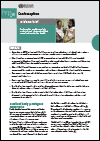
Resource | Publications,
Family planning has clear health benefits, since the prevention of unintended pregnancies results in a subsequent decrease in maternal morbidity and mortality. Contraception allows spacing of pregnancies, delaying pregnancies in young girls who are at increased risk of health problems from early childbearing, and preventing pregnancies among older women who also face increased risks. Contraception enables women who wish to limit the size of their families to do so. By reducing rates of unintended pregnancies, contraception also reduces the need for unsafe abortion. Contraception is a low-cost and effective way to save lives.
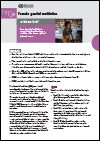
Resource | Publications,
FGM is recognized internationally as a violation of the human rights of girls and women. It reflects deep-rooted inequality between the sexes, and constitutes an extreme form of discrimination against women. It is nearly always carried out on minors and is a violation of the rights of children. The practice also violates a person’s rights to health, security and physical integrity, the right to be free from torture and cruel, inhuman or degrading treatment, and the right to life when the procedure results in death.
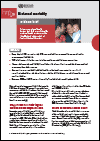
Resource | Publications,
Maternal mortality is unacceptably high. Estimates for 2017 show that some 810 women die every day from pregnancy- or childbirth-related complications around the world. In 2017, 295 000 women died during and following pregnancy and childbirth. The vast majority occurred in low-resource settings, and most could have been prevented.
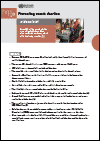
Resource | Publications,
Any woman with an unwanted pregnancy who cannot access safe abortion is at risk of unsafe abortion. Women living in low-income countries and poor women are more likely to have an unsafe abortion than more affluent women. Deaths and injuries are higher when unsafe abortion is performed later in pregnancy. The rate of unsafe abortions is higher where access to effective contraception and safe abortion is limited or unavailable.
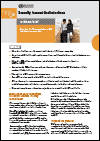
Resource | Publications,
STIs have a profound impact on sexual and reproductive health worldwide. More than 1 million sexually transmitted infections occur every day. Each year, an estimated 376 million infections occur with one of four curable STIs: chlamydia, gonorrhoea, syphilis and trichomoniasis. More than 500 million people are living with genital herpes infection. Approximately 300 million women have HPV infection and numbers among men are likely as high.
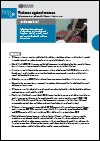
Resource | Publications,
The health sector has an important role to play in addressing violence against women by providing comprehensive health services including for sexual and reproductive health, providing referrals to other support services; gathering evidence through data and research; fostering prevention policies in other sectors; and advocating for violence against women to be recognized as a public health problem and for resource allocation.
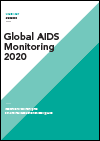
Global AIDS Monitoring 2020: Indicators for Monitoring the 2016 Political Declaration on Ending AIDS
Resource | Publications,
The purpose of this document is to provide guidance to national AIDS programmes and partners on the use of indicators to measure and report on the country HIV response.
The 2016 Political Declaration on Ending AIDS was adopted at the United Nations (UN) General Assembly High-Level Meeting on AIDS in June 2016. Built on three previous political declarations—the 2001 Declaration of Commitment on HIV/AIDS, the 2006 Political Declaration on HIV/AIDS and the 2011 Political Declaration on HIV and AIDS: Intensifying Our Efforts to Eliminate HIV and AIDS—the 2016 Political Declaration on Ending AIDS mandates UNAIDS to support countries in reporting on the commitments it contains.
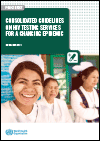
Resource | Guidelines,
These consolidated guidelines bring together existing and new evidence-based guidance and recommendations for delivering high-impact HIV testing services, including linkage to HIV prevention and treatment, in diverse settings and populations.
A key objective of these guidelines is to encourage greater national and global commitment to implementing effective and efficient HTS as a vital element of the national and global HIV response, essential to achieving and maintaining low HIV incidence.
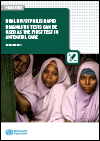
Resource | Publications,
WHO recommends that pregnant women receive testing for HIV, syphilis and hepatitis B (HBSAg) at least once during pregnancy, preferably in the first trimester.
Dual HIV/syphilis rapid diagnostic tests (RDTs) can be used as the first test for pregnant women as part of antenatal care (ANC).
These simple tests can be used at the point-of-care and are cost-saving compared to standard testing in ANC. They enable more women to be diagnosed with HIV and syphilis so that they can access treatment and prevent transmission to their children.
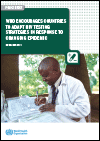
Resource | Publications,
HIV testing services (HTS) and anti-retroviral therapy (ART) have been scaled up substantially. It is estimated that, globally, nearly 80% of people with HIV now know their status. With the offer of immediate ART initiation and improved treatment options, access to and uptake of treatment have increased, too. Now, most people with HIV who know their status are obtaining treatment and care.
In response to these changes in the global HIV epidemic, WHO is encouraging countries to use three consecutive reactive tests for an HIV-positive diagnosis as their treatment-adjusted prevalence and national HTS positivity fall below 5%.





